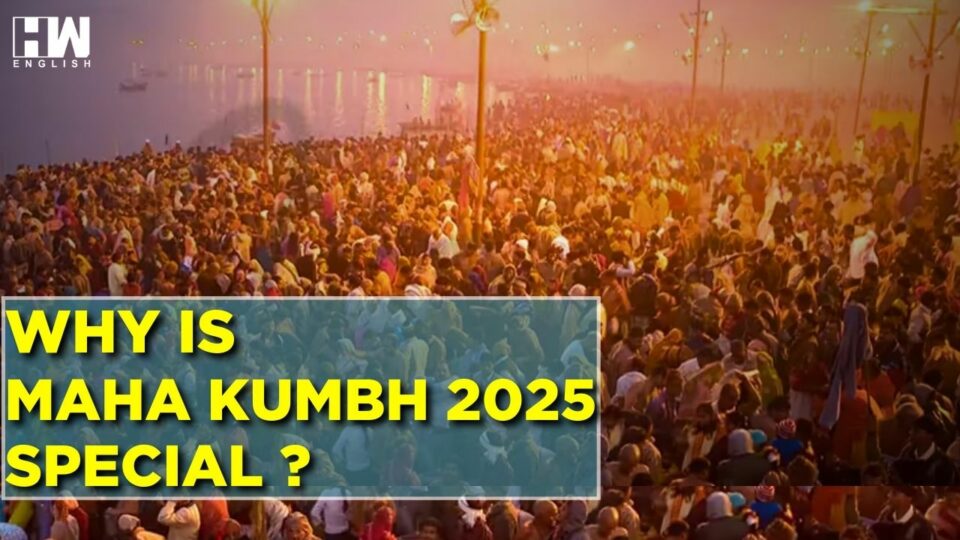You might have seen posters of Maha Kumbh at metro stations and newspapers; you might have seen reels regarding the pilgrimage festival.
But do you know why Kumbh Mela is celebrated?
And why is this particular Kubh so special?
The MahaKumbh Mela will start on 13 Jan 2025 and will continue till 26 Feb 2025, aligning with the Shivratri. The alignment of planets determines the exact date of the Kumbh Mela.
Mahakumbh Mela 2025 is happening after 144 years due to a rare astronomical alignment of planets and stars. There are four types of Kumbh Mela:
- Kumbh Mela occurs once in 4 Years
- Ardh Kumbh Mela occurs once every 6 Years
- Purna Kumbh Mela occurs once in 12 Years
4. Maha Kumbh Mela occurs once in 144 Years
The Kumbh Mela spans four locations across India and rotates between one of the four pilgrimages, including Haridwar, Ujjain, Nashik and Prayagraj. This time, the Kumbh will take place in UP, Prayagraj. The 12-year cycle ensures that each of these four sites hosts the Kumbh Mela once every 12 years.
What is the significance of these places?
As per Hindu scriptures, The origins of the Kumbh Mela are rooted in the tale of the Samudra Manthan, or the churning of the ocean.
According to the scriptures, the deities and the demons joined forces in a cosmic effort to obtain Amrit, the nectar of immortality. As the churning unfolded, a Kumbh, which translates to pot in English, filled with this sacred nectar, surfaced. To not share it with the demons, Lord Vishnu, disguised as a female, known as the Mohini form of the god.
In the guise of Mohini, lured the demons to hand over the pot and gave it to the deities.During his journey, several drops of the nectar fell at four locations: Prayagraj, Haridwar, Ujjain, and Nashik. These places became revered as holy sites, where the Kumbh Mela is celebrated rotationally.
The main event of the Mahakumbh is the Shahi snan, or the royal bath. It is a sacred bathing ceremony that takes place at designated ghats along the holy river. It is considered a powerful spiritual act that purifies the body and soul and to cleanse sins, and grant spiritual liberation.
Reports suggest around 40 crore devotees will take a dip at Triveni Sangam, the confluence of three holy rivers, Ganga, Yamuna, and Saraswati. The Naga Sadhus are among the first to take the holy dip in the sacred rivers during the Shahi Snan.
Other ceremonies that take place are the traditional procession of Akharas, which translates to sectarians called ‘Peshwai’ on elephant backs, horses and chariots. Devotees sing hymns, chants, and bhajans. Pilgrims participate in yoga and meditation sessions. and other cultural programs like folk dance, devotional music takes place.
Meanwhile, the Adani Group has joined hands with ISKON to offer maha prasad seva at the Maha Kumbh mela. The maha prasad seva will be offered to around 1 lakh devotees every day, including 18,000 sanitation workers. The meals for the maha prasad seva will be prepared by 2,500 volunteers in 2 kitchens equipped with advanced facilities. The Maha prasad would include roti, dal, rice, vegetables and sweets.
If we speak about the security arrangements, A 7-layer security scheme is being implemented to avert any untoward incident in the mass religious gathering. AI-powered cameras, anti-drone systems, and tethered drones have been strategically deployed to bolster surveillance.
Around 40,000 policemen, including personnel of paramilitary forces and teams of UP technical services, have been deployed in and around Mela.
As an independent media platform, we do not take advertisements from governments and corporate houses. It is you, our readers, who have supported us on our journey to do honest and unbiased journalism. Please contribute, so that we can continue to do the same in future.

